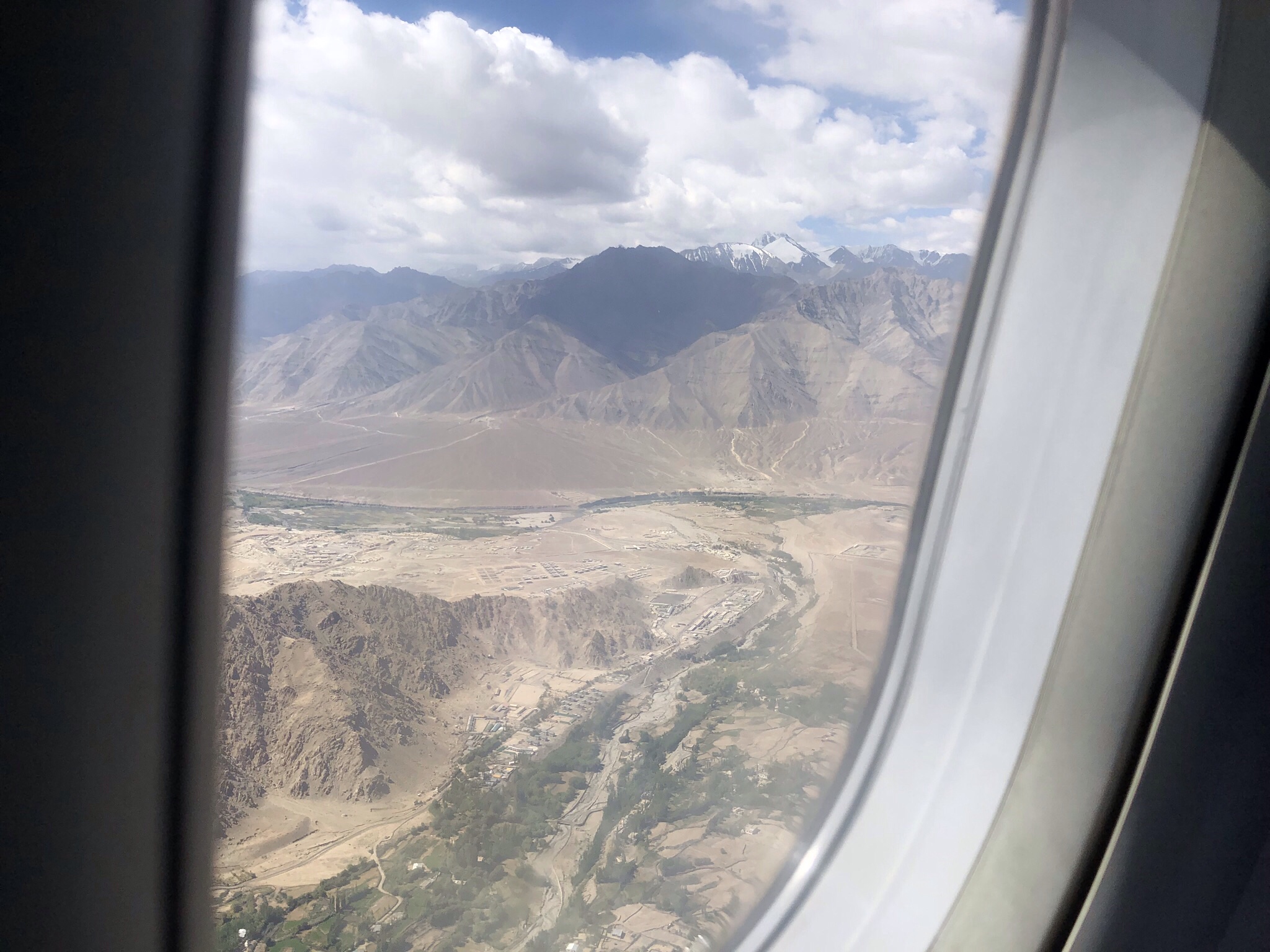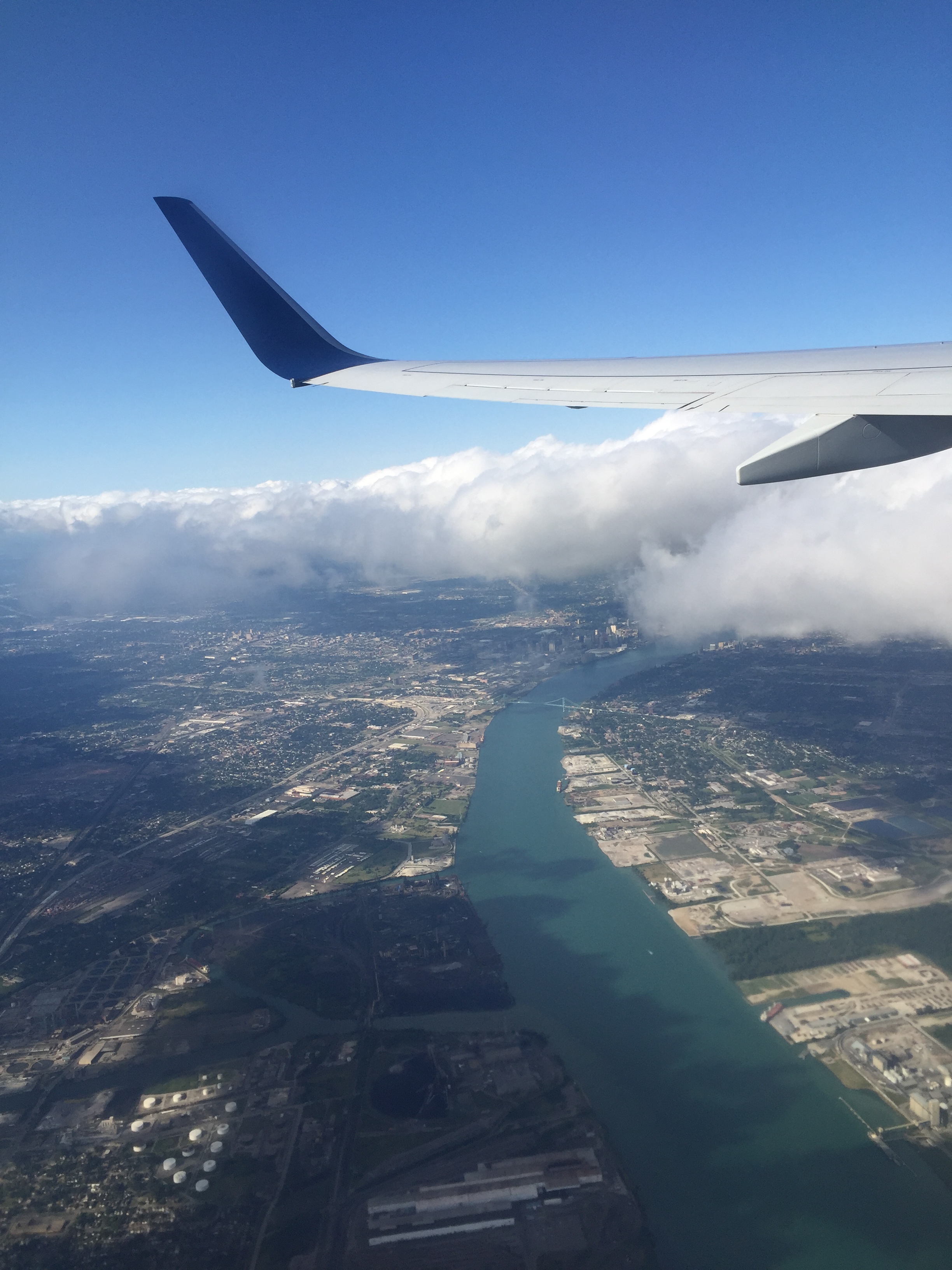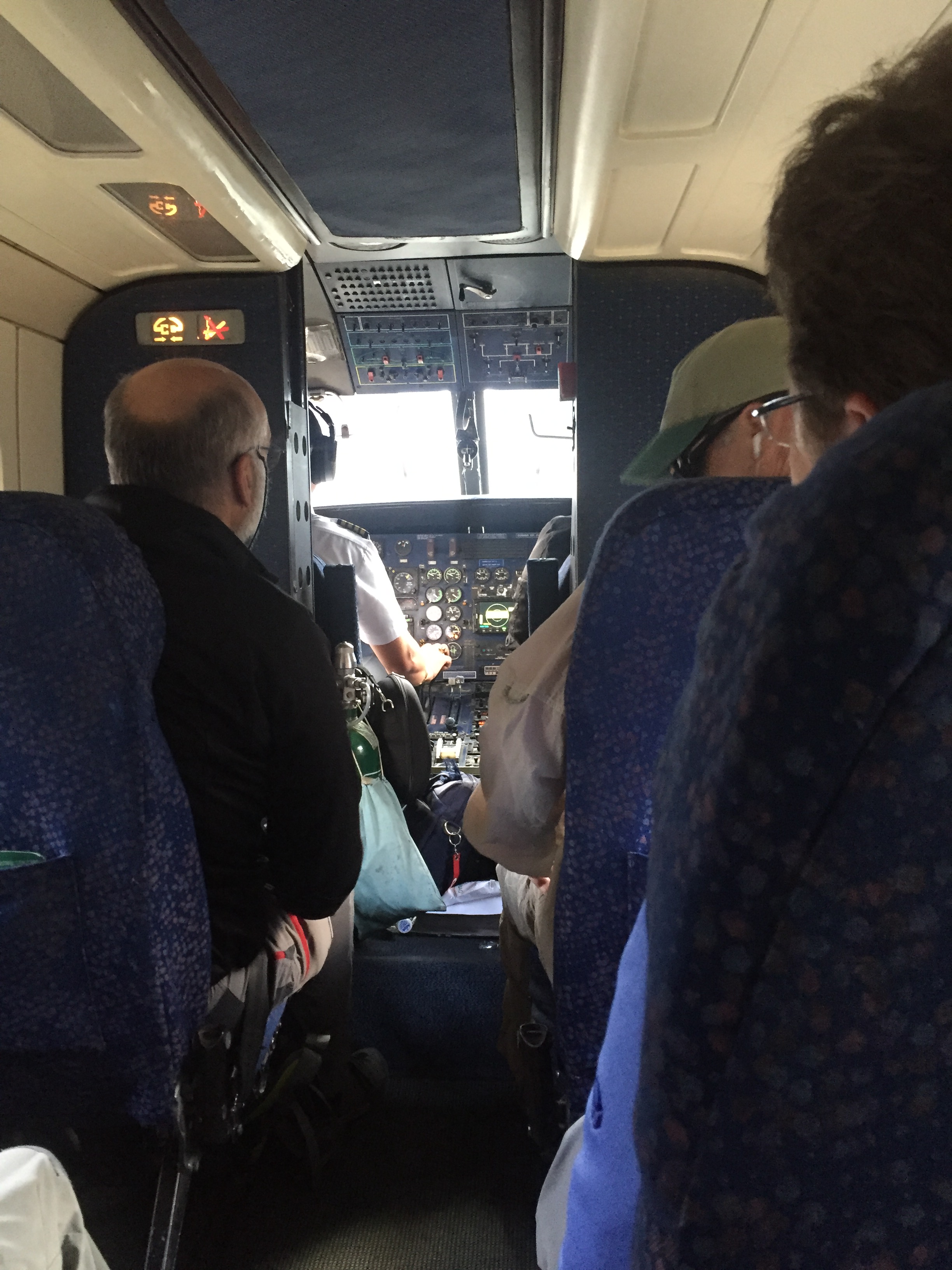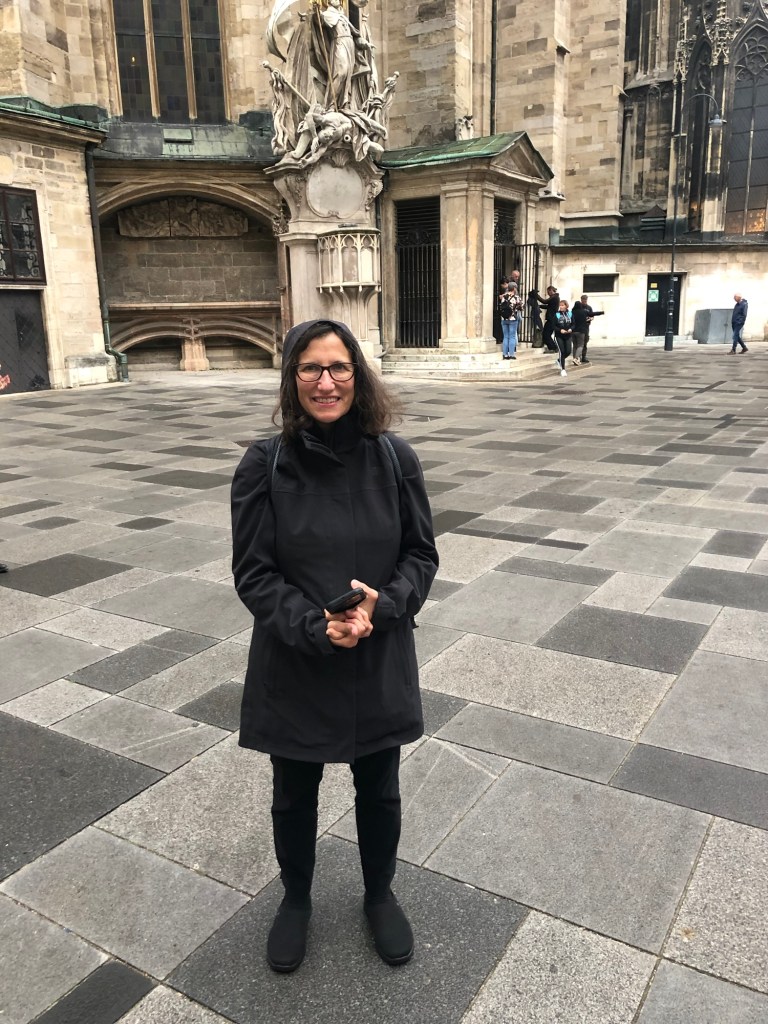
As I sit here on a cold, dreary Central Florida winter day, battling the same annoying case of Covid that half the population seems to have, nothing seems as pleasurable as revisiting our six weeks in Europe that made up the third phase of our sabbatical. You’ll recall J and I started our six months off in the UK and Northern Spain, followed by a multi thousand mile road trip that took us from Florida to Yellowstone National Park and back again, with multiple sights along the way.
On October 7, having barely slept, we finished last minute packing into two backpacks and carry on suitcases, and started our journey. Uber to MCO (for those of you not versed in Central Florida lingo, Orlando International Airport is actually the former McCoy Airforce Base, whose initials it still uses). After a flight to Newark, we boarded our Air Austria flight to Venice. All the flight attendants wore red, down to their stockings, and despite some bumpiness there were free drinks and good food, albeit little sleep.
We arrived in Vienna very early on Sunday morning and managed to find the train to take us to the Prater station, which, to our surprise, was at the edge of a very large and old fashioned amusement park. Ferris wheel, roller coasters, fun houses, and games of chance…it reminded me of Tivoli Gardens in Copenhagen, which informed Walt’s ideas for Disney….I guess I just can’t escape! Pulling our suitcases through a deserted carnival the day after the last day of Oktoberfest was a little eerie.
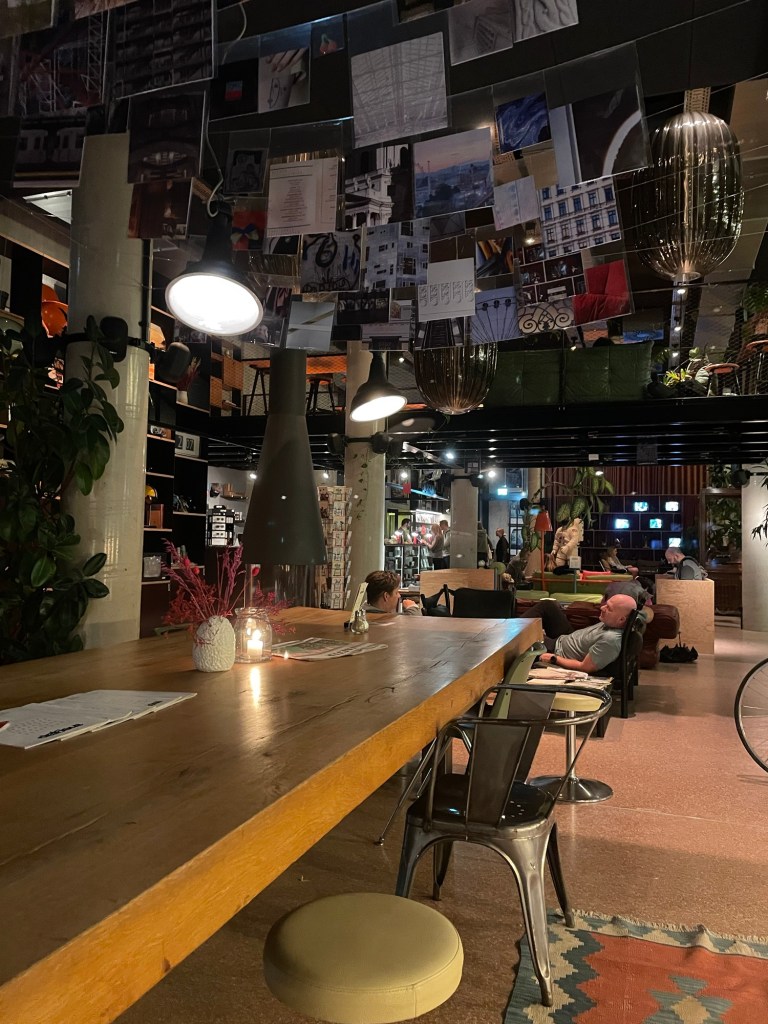
The Superbude Hotel, recommended by one of J’s colleagues, was just on the far side of the park. A very hipster style place, with lots of retro, mid century modern stuff in the lobby, including an astronaut space suit. Our room, which fortunately was ready by 10 am, was perhaps modeled after a tent? How appropriate. A pattern of mushrooms on the wallpaper, net hanging from the ceiling to mimic tent walls (?), folding chairs attached to the wall.
After a brief rest we decided to wander toward the city center via the canal. We’d been told there were lots of bars and establishments on the canal – we could see signs of that but they certainly weren’t open on a cold and rainy fall Sunday.
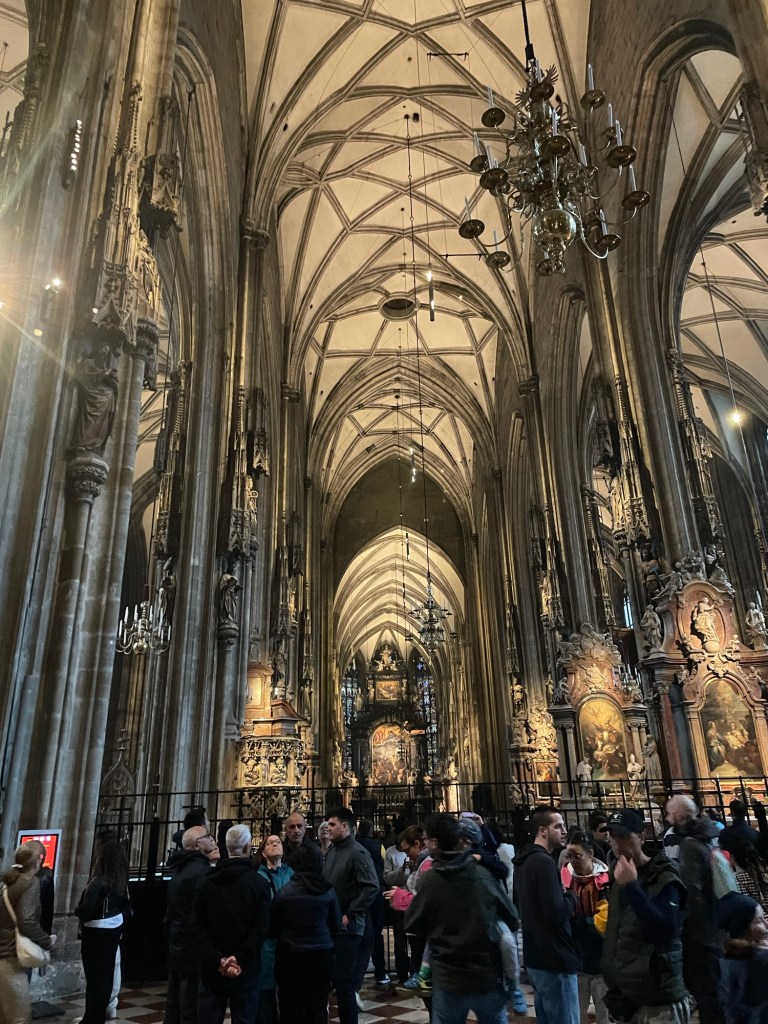
Eventually we made our way to the old city center. Lots of grand, ornate buildings situated next to utilitarian structures clearly built after the war. We ventured into St. Stephen’s, the main cathedral in Vienna. Highly decorated, multiple altars, and a Virgin Mary icon that is supposed to have wept…and to whom many were lighting candles.

It was now raining even more so we headed back to the hotel in a slightly more direct fashion. We hadn’t yet mastered the subway system. After a little more napping, we went to a nearby restaurant in the non carnival side of the Prater, which is dominated by the Sigmund Freud University and the Messe Vien (a conference center) and home to lots of small shops and cafes. The restaurant, Stuwer, was great and local. J had wild boar schnitzel (we were later informed that wild boar are farmed domestically and not actually being hunted in the wild!), and I had fried carp served over carrots and leeks. Two things I learned – (a) carp is an edible fish and (b) Weiner means Viennese style. Also discovered that spritzes (red or white wine or Aperol mixed with seltzer) are huge in Austria. And they are good – with none of the nasty sweeteners that tend to be added in the states.
The next day was our one full day in Venice before heading toward the Salzburg Lakes for a week of hiking. My diary reflects that I was fighting off an upper respiratory infection but felt ok. How appropriate, given my current circumstances.
Breakfast for me was something called “eggs in a glass.” Medium boiled eggs in a small bowl, liberally sprinkled with chives, and bread and butter. Chives are also very popular.
I had done a lot of work by then to figure out the underground, so we walked to the nearby Messe station, took the U2 one stop to the U1, which took us to the main train station from which we’d be leaving tomorrow.
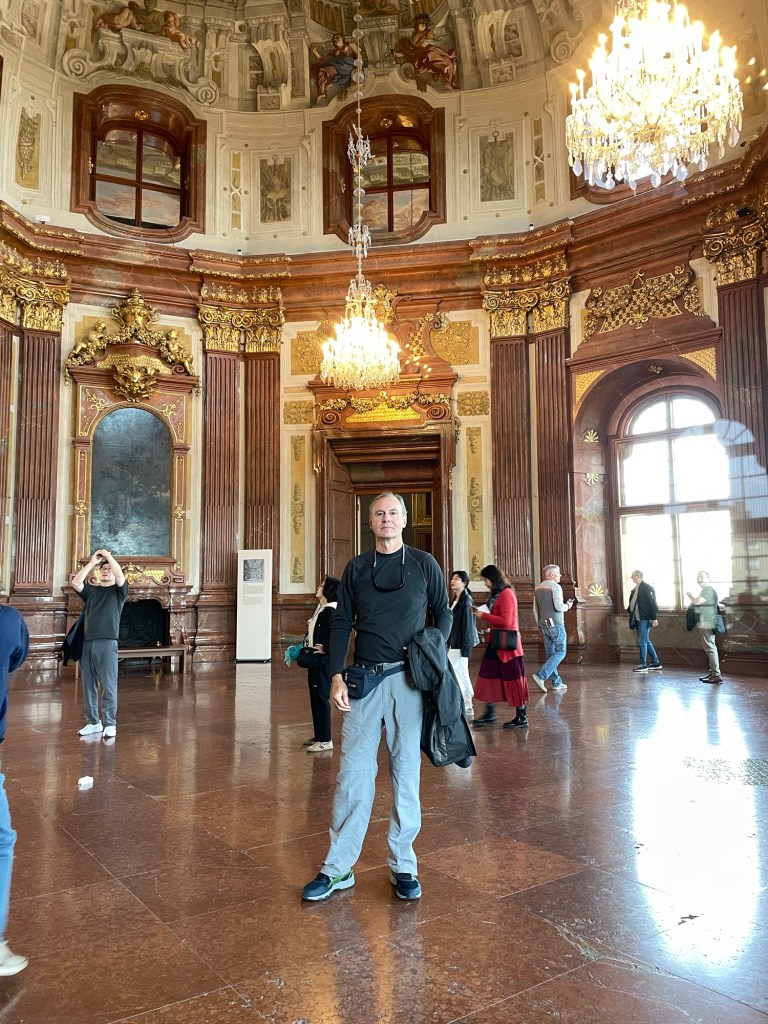
Then, using GPS (thank God for GPS which connects even without Wi-Fi) we walked ten minutes to the Belvedere Palace, one of the huge Hapsburg palaces. It was originally the summer residence of Prince Eugene of Savoy. There are two palaces, upper and lower, surrounded by formal gardens. The museum is in the upper palace, so that’s what we explored. Built in 1723, the ceilings are painted, highly ornate, and the signs did a good job of explaining the function of each room.


There’s an enormous collection of Klimt, including the famous “The Kiss,” which even has its own signs posting its location. The Messerschmidt character heads also reside here.
It was very interesting to view the Expressionist and Modernist works against the backdrop of 18th century baroque rooms. And it’s a manageable size museum.
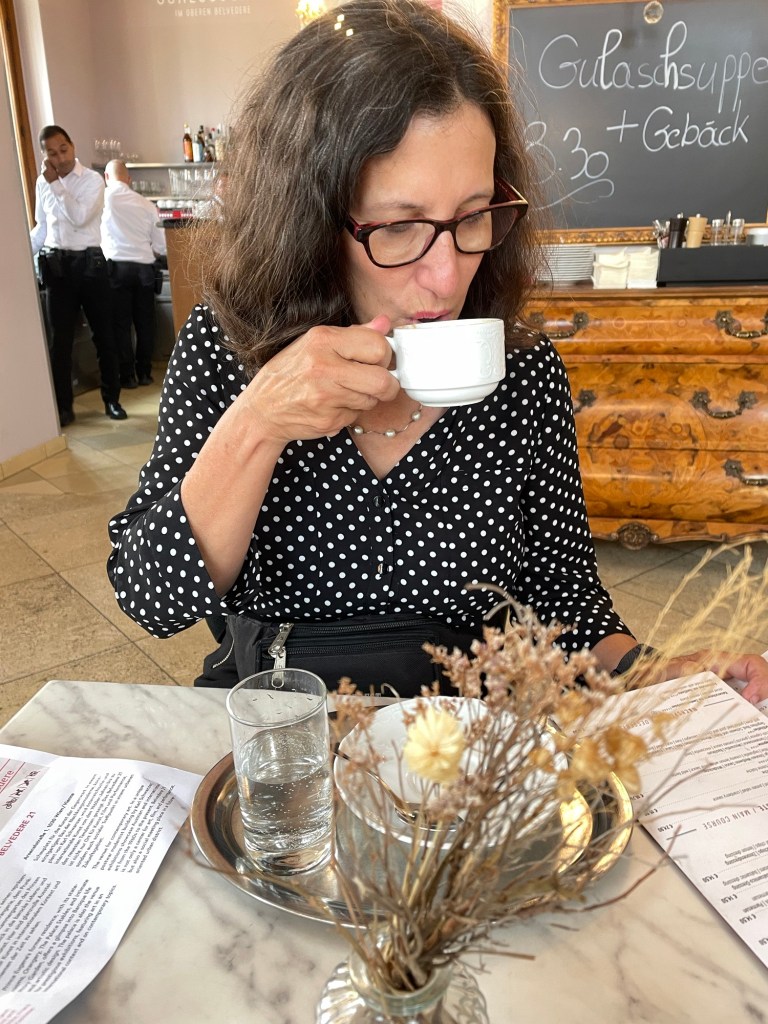
After Viennese coffee and chocolate torte at the cafe (how could we not) we walked another thirty or so minutes to the Museum Quartier. This took us past the Secession Building, the headquarters for an iconoclastic group of artists led by Klimt (and whose members seemed to come and go based on personal and other conflicts). The building is ornately painted and has a golden globe on top; designs harkening back to the English Arts and Crafts movement, at least to my eye.

The Museum Quartier is a collection of art museums and event spaces, and also home to the Vienna University of Technology (architecture and design), and is full of pedestrian walkways and lots of trees.

After a quick lunch we went to the Leopold Museum, which has an amazing collection of Vienna 1900. See the film, Portrait of Wally, for more background on the museum’s less than salubrious history. The museum is constructed of white travertine marble, and is light and airy. There are numerous references throughout to settlements reached with the original owners of a number of the paintings.
We saw lots more Klimts, and rooms of Egon Schiel’s paintings. He died at age 28, in 1918 of the Spanish flu, only three days after his pregnant wife- and the same year that his mentor, the much older Klimt, died. It was also the year he had his first successful show.
It turns out that I was so enamored with the various print and graphic styles and their potential use in future projects most of my photos are of various posters and not of the great Klimts and Schiels!
I had never really before focused on the immensity of Vienna as a cultural and intellectual capital in the early 20th century- Klimt, Schiller, Freud, Mahler, Wittgenstein- you name it. And then along came the world wars and isolation for some decades.

By this time we were pretty museumed out, and took the train back to the hotel. Dinner that night was at L’Osteria, a nearby Italian restaurant that’s part of a chain but clearly a local student hang out and quite inexpensive.
It was time to try to get some sleep. Some real Austrian adventuring was about to begin the next day.
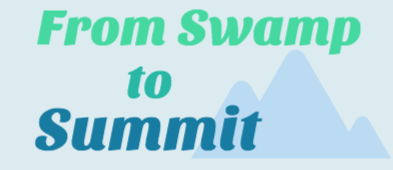

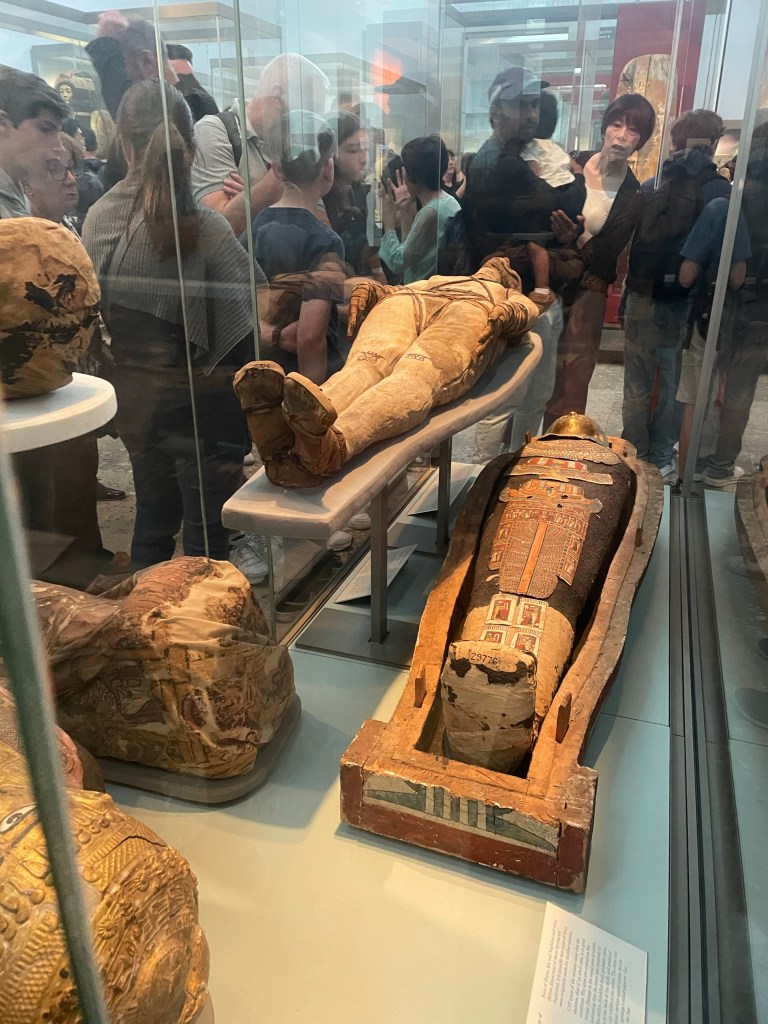






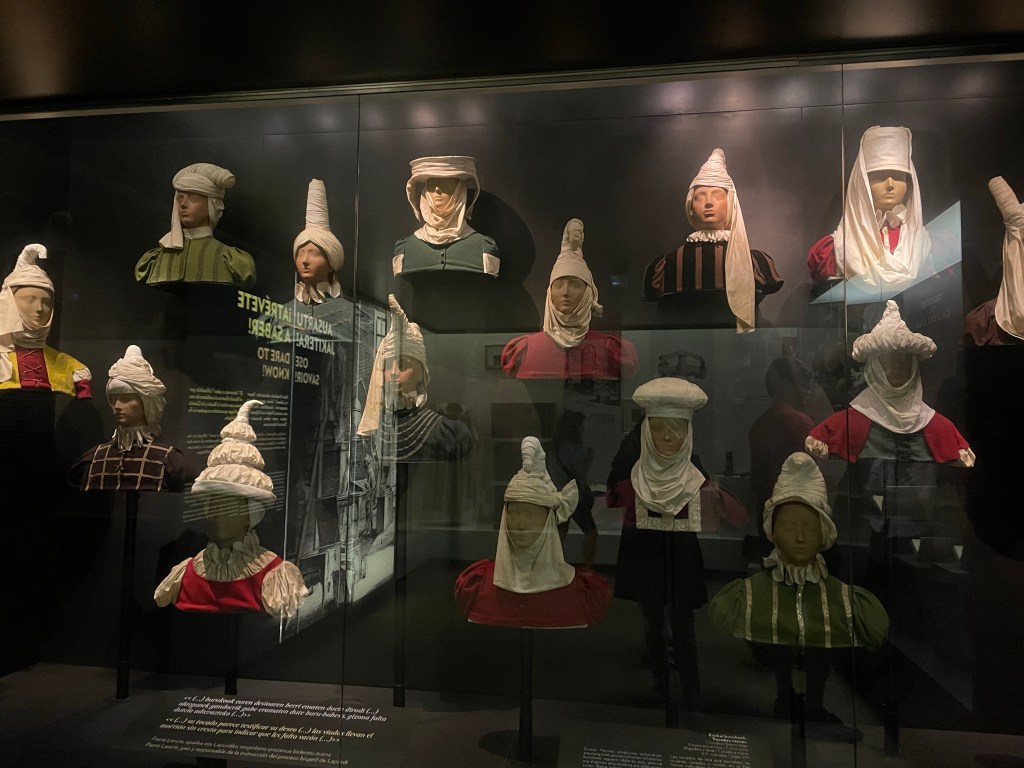
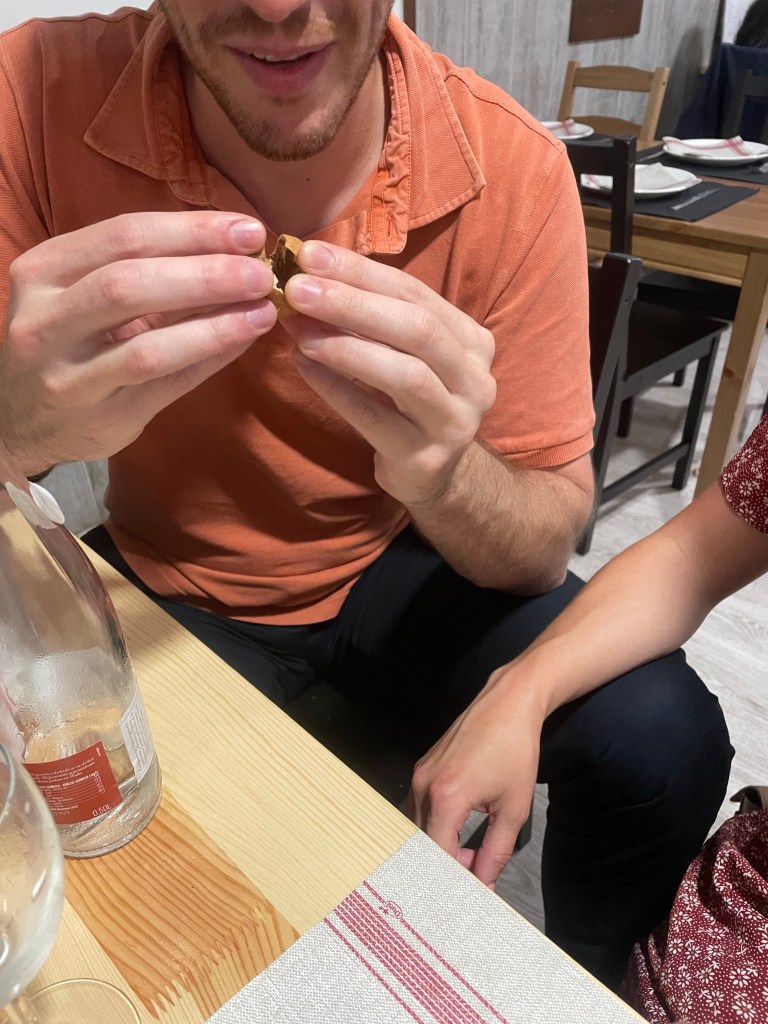




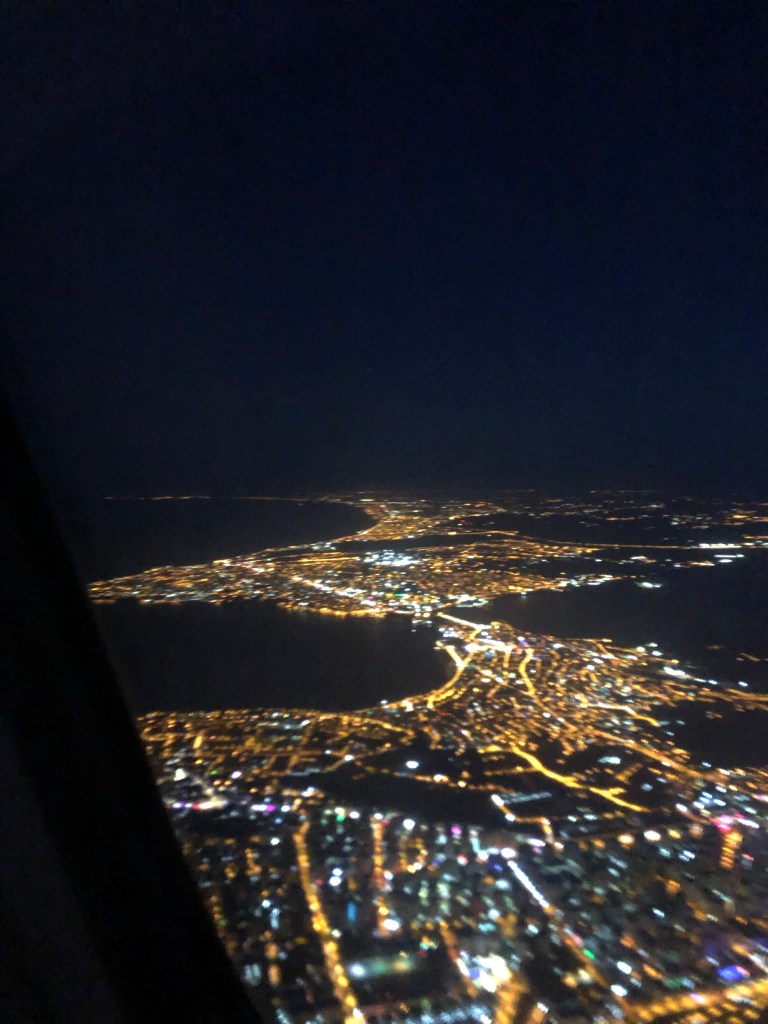

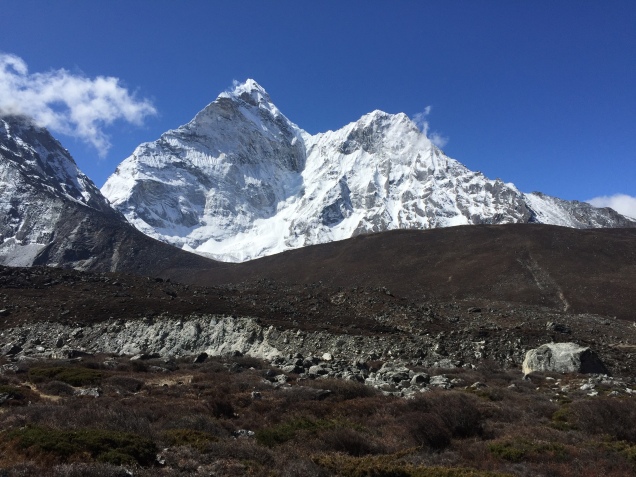
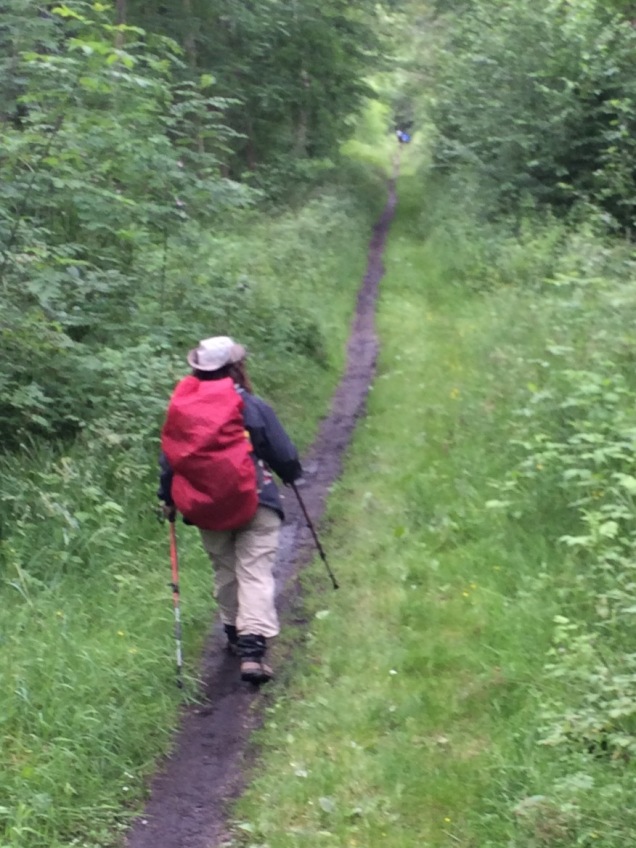


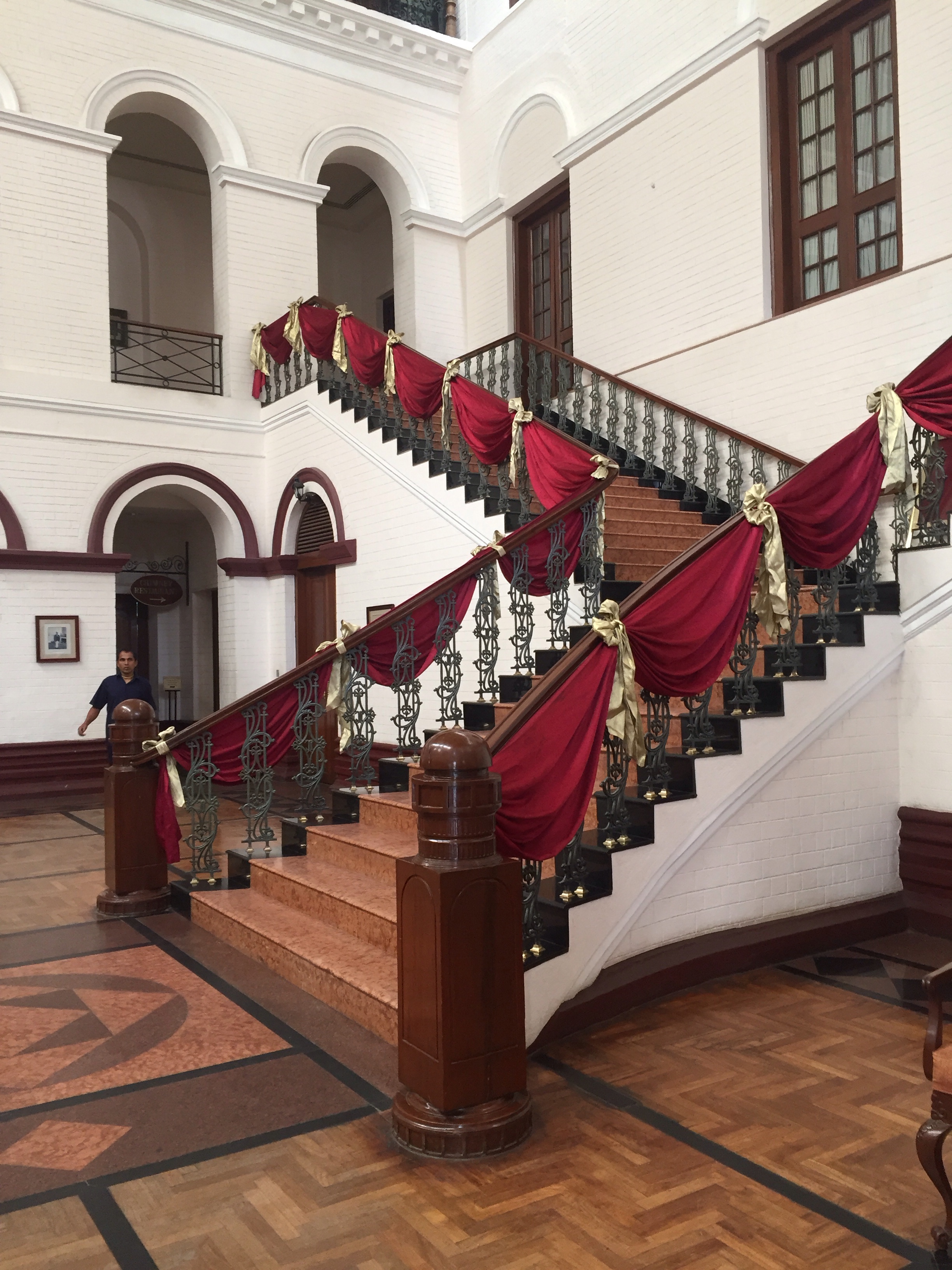




 Once we arrived in Delhi we knew to look for the e-visa line thanks to our travel companion S who’d arrived a day before and encountered no queues there. We were duly met by our Delhi group leader and transported to the Ashok Country House hotel. We passed numerous chain stores (like Benetton), all closed as it was Sunday. “Normal” looking stores were interspersed with carts and people selling anything you could imagine. The hotel was dated and a little quirky but perfectly nice, and we went off to the pool to meet our fellow trekkers. It was 112 degrees Fahrenheit. Our group ranged from two 61 year olds down to two 27 and 28 year olds. Four from the US and seven from the U.K. All of us seemed quite compatible and we shared a few Indian beers. We all found it remarkable that the alcohol content was given as a range – a “light,” which was “up to 5%” or a “strong,” which was between 5.2 and 8%.” Did that mean a light could have 0?
Once we arrived in Delhi we knew to look for the e-visa line thanks to our travel companion S who’d arrived a day before and encountered no queues there. We were duly met by our Delhi group leader and transported to the Ashok Country House hotel. We passed numerous chain stores (like Benetton), all closed as it was Sunday. “Normal” looking stores were interspersed with carts and people selling anything you could imagine. The hotel was dated and a little quirky but perfectly nice, and we went off to the pool to meet our fellow trekkers. It was 112 degrees Fahrenheit. Our group ranged from two 61 year olds down to two 27 and 28 year olds. Four from the US and seven from the U.K. All of us seemed quite compatible and we shared a few Indian beers. We all found it remarkable that the alcohol content was given as a range – a “light,” which was “up to 5%” or a “strong,” which was between 5.2 and 8%.” Did that mean a light could have 0?